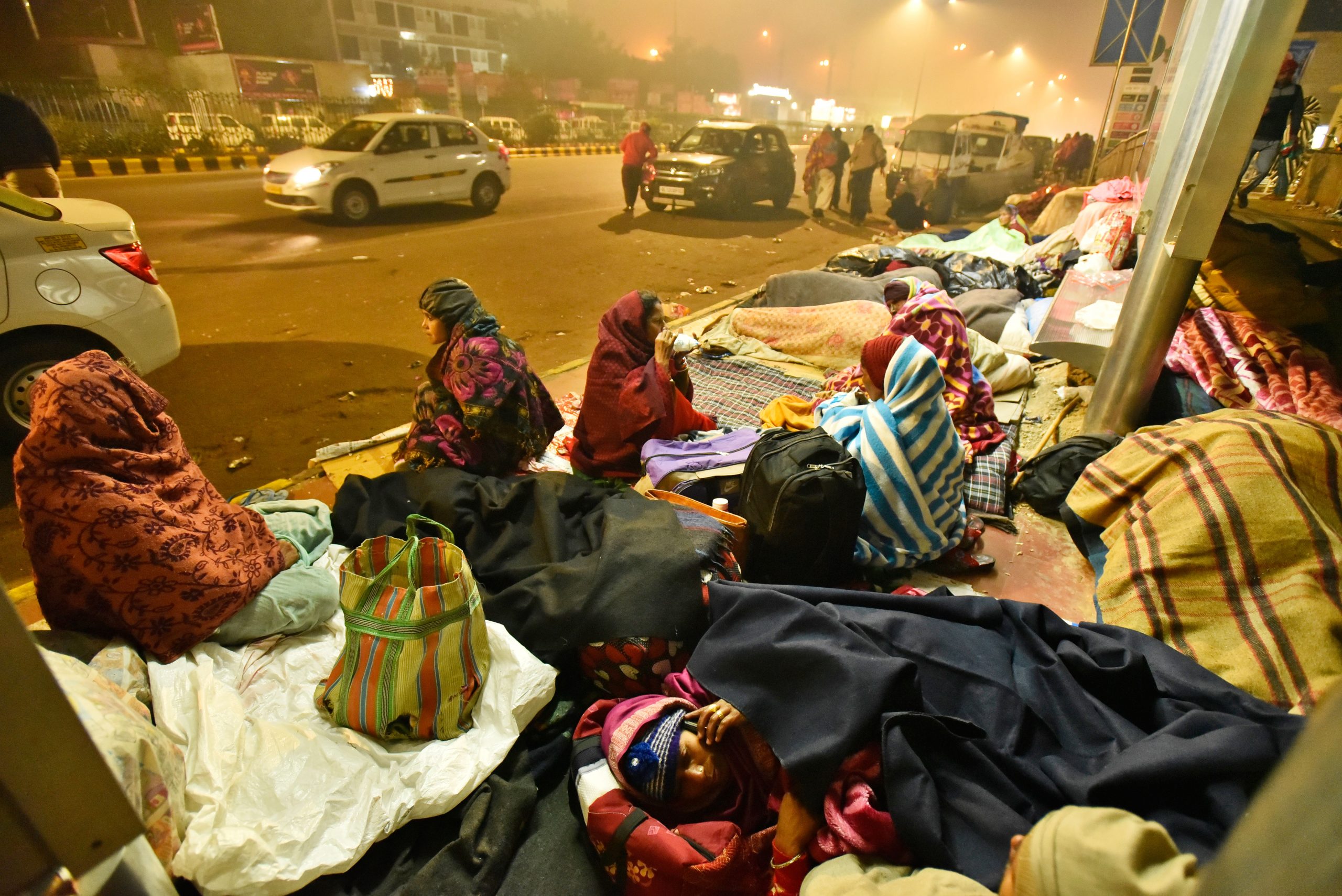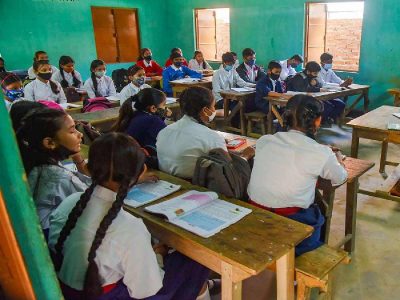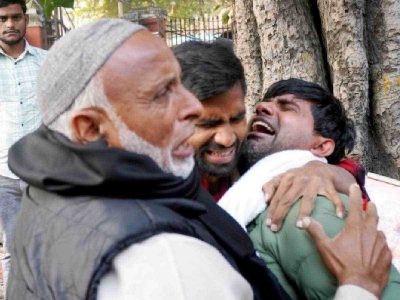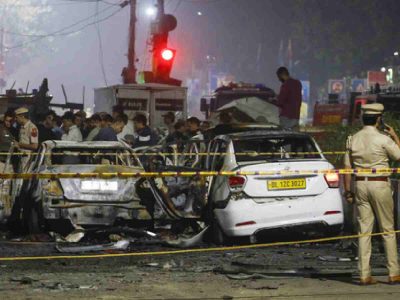Rajesh, with shoulders drooped by the weight of his journey, finds himself caught in Delhi’s bitter cold. As the 45-year-old speaks, his voice carries the weariness of the miles travelled from his remote village, Bhagwatpur in Uttar Pradesh.
“Every night is a challenge,” Rajesh rasps who suffers from a persistent cough.
The quest for medical care brought him to the bustling streets of Delhi, where the fight against illness merges seamlessly with the fight for survival in biting cold.
“At AIIMS, the days are long, and the wait seems endless,” he murmurs.
But it’s when the sun dips below the horizon that the true test begins. His eyes, once filled with hope, now reflect the harsh reality of finding a place to rest.
“Shelter homes,” he sighs, “are crowded and any space there is a luxury.”
Rajesh describes the nightly ritual of searching for refuge.
“The cold pierces through everything — clothes, blankets, and bones. It’s a battle for warmth, for a corner where the biting winds relent, but the shelters, they’re packed.”
Accessibility is a roadblock
Despite the existence of shelter homes in the vicinity of AIIMS and Safdarjung Hospital, a significant number of people are forced to sit on the pavements.
“This is primarily due to the high volume of individuals accompanying patients, many of whom arrive months before their scheduled appointment dates,” says Sudhanshu Kumar, 30, who runs a confectionery store near AIIMS.
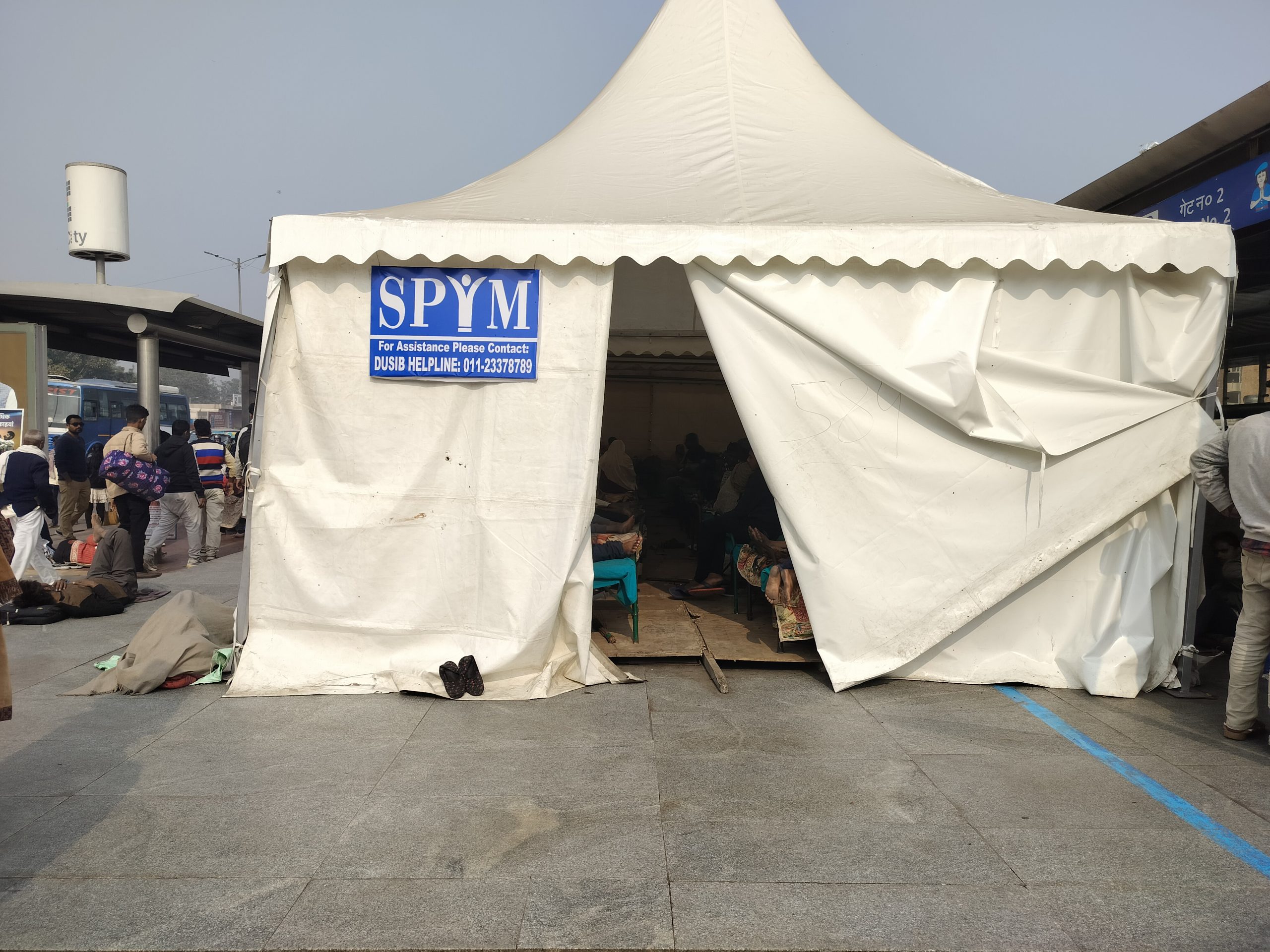
Adding to the complexity, those seeking shelter must present their OPD (Outpatient Department) cards for admission, further intensifying the competition for available beds. The shelter homes allow only two individuals to accompany the patient inside.
The stringent entry conditions contribute to the visible overflow of people on the outside, creating a challenging scenario for those grappling with health concerns and the harsh winter.
Lack of basic facilities
Every year, many visitors to these hospitals face not only biting cold but also the absence of fundamental facilities in shelters meant to provide refuge.
In the tents supposed to offer temporary respite, there is reported scarcity of drinking water, leaving occupants parched and reliant on water tankers that visit occasionally.
“Honestly, there’s nothing in the name of basic facilities here. Water and sanitation are something too fundamental that the authorities have failed to provide,” complained a resident.
Those seeking refuge are hindered by financial constraints and find it hard to purchase water bottles regularly. They rely on public water taps and water tankers.
“Why aren’t there any solutions in place?” questions Sushila Kumari, 35, a resident of the shelter home outside Safdarjung Hospital.
“Potable water is not merely a convenience but a fundamental right. The absence of a consistent and reliable water supply is a systemic failure and burdens those who are already suffering due to lack of medical care in hometowns,” says Sushila.
Residents also lament the lack of functional and accessible toilets within the shelter homes, heightening their reliance on nearby public facilities.
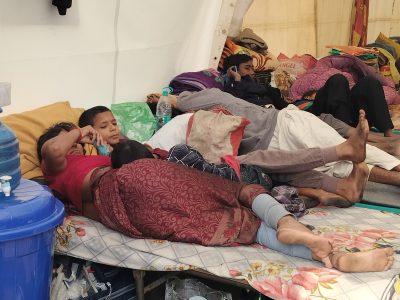
“There are no makeshift toilets and consequently we have to walk a long patch of road to use the toilet inside the hospital. It is extremely difficult and inconvenient especially for women and children,” says Kamlesh Meena, 50.
The New Delhi Municipal Council (NDMC) toilet facility, close to the shelter home, disappoints. Although officially open till 10 pm, the facility is often closed before time, with its caretaker routinely locking it up at 8pm.
Meena, who hails from Moradabad in Uttar Pradesh, and is here for lung tumour treatment at AIIMS, highlights the challenges.
“After sunset, the caretaker locks the toilet, leaving us with no option but to use facilities within the hospital, which are quite far from our shelter homes. Even in daylight, the condition of these facilities is deplorable.”
Since he can’t afford to travel frequently and his next medical appointment is just 15 days away, Meena has made the difficult decision to remain in the Capital.
“People should recognise that the influx of patients and their families at the hospital is overwhelming. A significant number is here primarily for free meals as per my observation. Staying here is a feasible option for many people. Every day, they receive food from the Delhi Urban Shelter Improvement Board (DUSIB), and at night, volunteers distribute blankets. Currently, someone is distributing poori-sabzi a few meters away,” shares Jeetu Singh, proprietor of a tea stall outside gate No. 1 of AIIMS.
Plight of the homeless in the Capital
There are about 240 shelter homes in Delhi right now, but the footfall keeps increasing every year. There are two types of shelter homes — permanent and temporary.
Temporary encampments have been established across various zones in Delhi, featuring provisions such as beds and blankets. These white tents are about 12-feet tall and have a capacity of about 25-30 beds.
These shelter homes are operated by an NGO called SPYM. The absence of comprehensive data regarding individuals without shelter in Delhi illustrates systemic oppression of marginalised populations. While the Census Survey of 2011 puts the number of homeless in Delhi at a mere 47,000, activists contend that the actual number surpasses two lakh individuals.
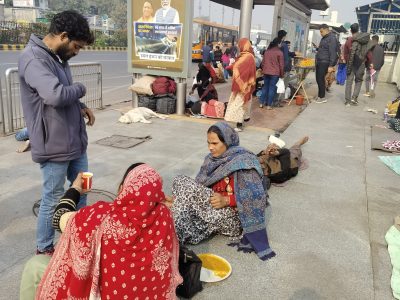
Geeta Devi, serving as the overseer of a permanent shelter near Gurudwara Bangla Sahib in Connaught Place, says, “We are waiting for food truck that is supposed to deliver grains and other essential commodities. The NGOs send them on a regular basis and we can also ask them as per our requirement.”
Intriguingly, the shelter accommodates individuals with varying tenures of stay, spanning from several months to years. The residents exhibit a trait of self-sufficiency, with some adept at preparing their own meals, while others rely on the support extended through governmental and non-governmental sources.
Adjacent to the venerable Bangla Sahib Gurudwara, this shelter home is designed to maintain gender-segregated quarters. However, the current challenge lies in the underutilisation of these temporary shelters, leading to a lack of checks on facilities.
Ramji Lal, a 63-year-old residing in the shelter for the past three days, laments, “There is only a single thin blanket available at the moment, and surviving in this bitter cold is becoming increasingly challenging.”
Efforts to ensure an adequate supply of essentials, such as blankets, can make a significant impact on the well-being of the occupants during the harsh phase of winter.
In a temporary facility located approximately a kilometre from Paharganj, 31-year-old Nandu Sinha, responsible for the site, reported the ongoing electricity supply problem to his higher-ups days ago.
“I informed my superiors about the problem related to electricity three days ago, but there’s been no action taken. We’ve been provided with a limited number of lamps for the shelters, accommodating around 20 people. Presently, we have to charge these lamps off-site and bring them back daily. A single charge lasts for just about two hours,” he explains.
In November, the Delhi High Court instructed the Chief Secretary to conduct a comprehensive audit of DUSIB shelter homes to address security concerns and prevent ineligible individuals from occupying them.
This instruction, arising from a case about non-payment to the Akshaya Patra Foundation, mandated a six-week timeline for the audit. The Principal Secretary (Finance) approved payments until March 2024, ensuring the settlement of outstanding dues. The government is also committed to streamlining meal supply processes and establishing an efficient payment mechanism within six weeks for improved functioning of shelter homes.
Highlighting the safety concerns associated with shelter accommodations, Shambhu emphasises, “As a truck driver, I return in the late hours. The uncertainty of securing space at a shelter for my family has become a concern. The prevalence of substance abuse within the shelter environment raises apprehensions, especially for the safety of my wife and young kids.”
In addition to the substandard and unwelcoming conditions, Shambhu has identified a critical factor dissuading the homeless from seeking refuge in these shelters: the lack of respectful and dignified treatment by the staff.
He expresses, “These officials treat us like we are animals.”
Role of NGOs and local initiatives
“Living on the streets is a harsh reality that often goes unnoticed. Shelter homes seem elusive. Despite their existence, many of us find ourselves excluded, the limited spaces unable to accommodate the sheer number seeking refuge. Nights are endured in makeshift shelters constructed from cardboard and other materials, a feeble defence against the biting cold as we grapple with the risks of illness and malnutrition,” articulates Bhavya Mehta, a physiotherapy graduate (BPT) presently employed as a clinical investigator.
She also serves as a dedicated volunteer at the Rotaract Club of Delhi Titans, consistently visiting the underprivileged areas of the city.
“Survival becomes a daily struggle, marked by resourcefulness and resilience. Each day, I see people scour for food, clean water, and a safe place to rest, all the while facing social stigma that accompanies homelessness. Non-profit organisations and local initiatives become lifelines,” she adds.
Shelter management entities are currently encountering operational impediments due to the outstanding payment of approximately Rs 26 crore since September 2021. This prolonged non-receipt of funds not only jeopardises the quality of services provided at shelter facilities but also presents a considerable challenge, particularly amid severe cold weather conditions.
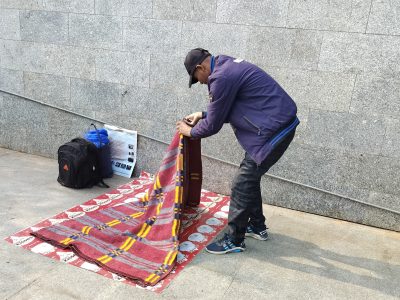
The primary stakeholders in this context are non-governmental organisations (NGOs) entrusted by the DUSIB to administer shelter homes. These organisations play a pivotal role in offering essential services such as caretaking, sanitation, electricity, maintenance, and COVID-19 protective measures, including the provision of masks and hand sanitisers.
A representative from the Shelter and Lodging Management Standing Committee says, “We must have a system which can be a bridge between the government and the needy people. There’s undeniable corruption in the system. Most significantly there are no surveys and regulations in place. Shelter homes need to be monitored on a regular basis and proper reports and documentation must be in place to understand the problem.”
The representative who refused to be named highlighted that the people employed in the shelter homes including the volunteers and in-charges come from humble background themselves. They can’t do things beyond a certain level and therefore, government intervention is a must.

